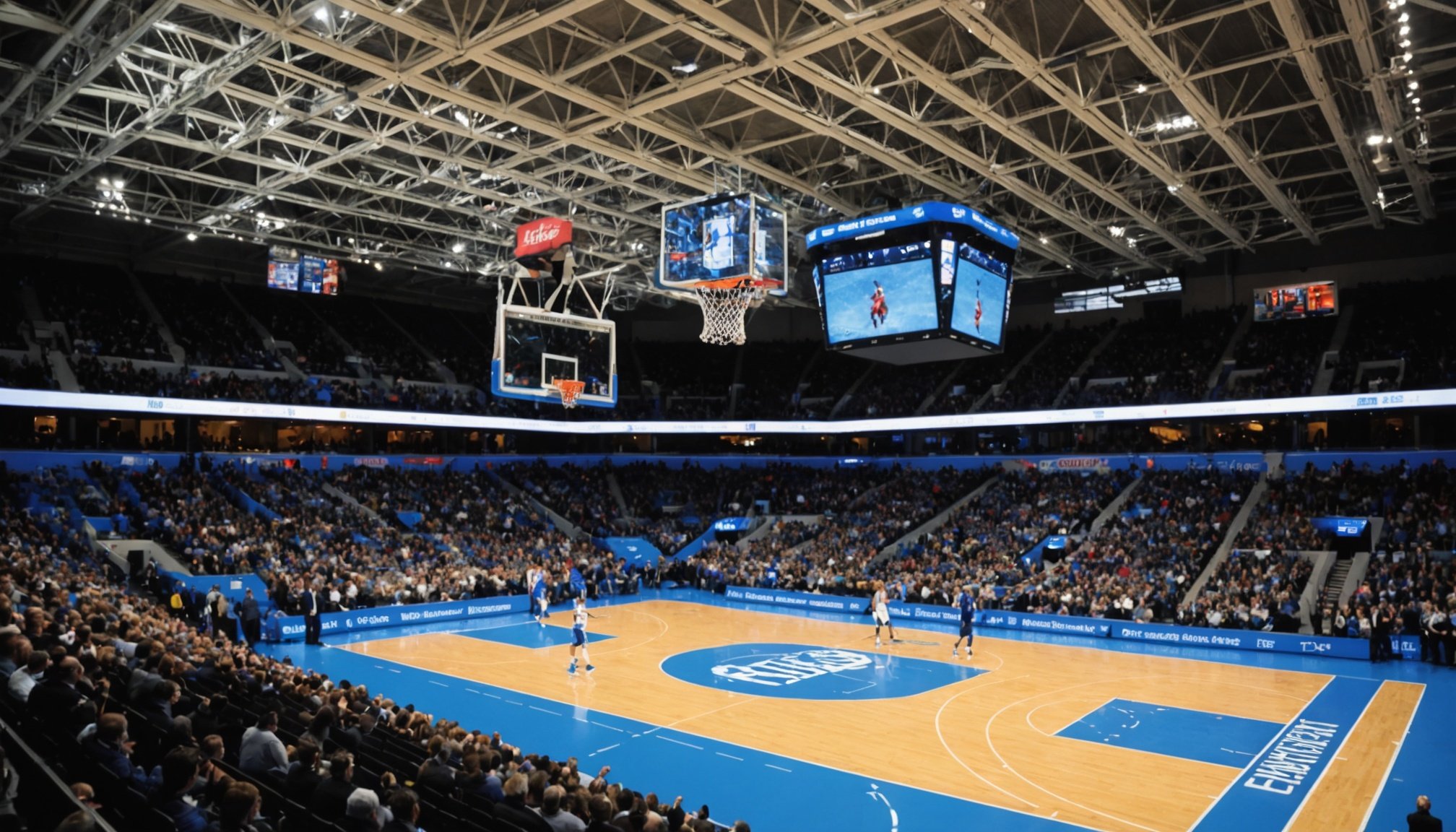Understanding the Economic Ripple Effect of Basketball Arena Expansion
The term economic ripple effect refers to the chain reaction of economic activity triggered by an initial event or investment. When a basketball arena undergoes expansion, this initial investment acts like a stone dropped into a pond, causing waves that extend beyond the immediate scope of construction. The ripple effect meaning in this context highlights how money spent on projects creates successive rounds of spending and income in the local economy.
In the UK, several basketball arena expansion projects illustrate this phenomenon clearly. These projects do more than just improve sporting facilities; they generate substantial economic impact through job creation during construction, increased local business revenues, and boosts in tourism. For example, expanding an arena increases seating capacity, which attracts larger crowds. This influx translates to more spending at nearby restaurants, shops, and hotels, illustrating the ripple effect as economic benefits propagate through the community.
Also to see : The influence of uk sport on the rise of basketball: exploring growth and impact
Initial economic changes sparked by arena construction include employment opportunities for construction workers, architects, and engineers. Once operational, the arena attracts events beyond basketball, such as concerts and exhibitions, which further amplifies the ripple effect in the area. These subsequent increases in commerce help stimulate sustained growth, showcasing how UK basketball arenas serve as catalysts for broader community economic development.
Direct Economic Impacts of Arena Expansion
Expanding an arena typically results in significant job creation, both during the construction phase and after completion. The construction industry benefits directly through increased demand for labor and materials, leading to more local employment opportunities. Workers ranging from skilled tradespeople to project managers contribute to the timely development of the facility.
Also to discover : Revolutionizing uk basketball: unleashing performance through cutting-edge training techniques
Capital investment in the arena development fuels economic growth by injecting funds into the region. These funds cover building materials, technology installations, and amenities, often sourced locally, further boosting businesses in related sectors. Such investments not only enhance infrastructure but also serve as a catalyst for urban regeneration.
For example, recent arena expansions in major UK cities have demonstrated measurable increases in employment rates post-completion, with hundreds of new jobs in venue operations, hospitality, and retail sectors. Internationally, venues that have expanded report a surge in seasonal and permanent roles aligned with event schedules, underscoring the lasting employment impact beyond construction.
The synergy between job creation, capital investment, and the construction industry consolidates the arena’s role as a key driver of economic vitality in its community.
Boost to Local Businesses and Tourism
The expansion of a venue significantly stimulates local business growth by drawing increased visitor numbers that benefit hotels, restaurants, and retail shops. For instance, as more people attend events, nearby hotels see higher occupancy rates, while eateries and shops experience a surge in customers eager to enhance their visit. This symbiotic relationship supports the broader hospitality industry, which relies heavily on such inflows to maintain profitability and expand services.
Moreover, local suppliers and service providers play a crucial role in this dynamic. Increased demand for fresh produce, cleaning, transportation, and event-related services creates numerous opportunities for businesses within the community. This ripple effect strengthens the local economy, fostering job creation and supporting smaller enterprises that supply essential goods and services.
To understand the magnitude of this impact, comparisons with similar venue expansions highlight the transformative potential of increased event tourism. In the UK and other countries, such expansions often lead to long-term benefits, including enhanced infrastructure and a more robust visitor economy. These examples confirm that investing in venues does not merely attract tourists temporarily but lays foundations for sustainable, diversified economic growth.
Fiscal Benefits: Tax Revenue and Municipal Gains
Understanding the fiscal benefits of arena expansions is crucial for assessing their impact on cities. Increased economic activity generated by such projects often leads to substantial boosts in tax revenue. When more people attend events, visit local businesses, or use nearby services, sales and income taxes collected by the local government rise accordingly. This influx of funds significantly improves public finances, allowing municipalities to better allocate resources.
These additional revenues enable local governments to reinvest in infrastructure, public services, and community programs, magnifying the positive cycle of growth. Cities experiencing successful arena expansions often report measurable increases in both short-term tax gains and long-term economic stability. This enhanced financial position helps fund diverse initiatives, from transportation upgrades to educational enhancements, benefiting residents beyond just the immediate footprint of the arena.
In practice, some cities have capitalized on arena projects by structuring agreements that earmark specific portions of tax revenue for local redevelopment efforts. This targeted reinvestment creates further economic benefits, fostering job creation and improving quality of life. Consequently, the arena acts as a catalyst for broader urban revitalization.
Influence on Real Estate Values and Urban Development
Urban arenas often act as catalysts for significant shifts in real estate markets, impacting both residential and commercial property values. Properties in proximity to such developments typically experience appreciation, driven by increased foot traffic, improved local amenities, and enhanced transportation links. This rise in demand can lead to higher rental yields and property prices, benefiting homeowners and investors alike.
Moreover, arenas contribute directly to urban regeneration, transforming underutilized or neglected neighborhoods into vibrant hubs. The infusion of capital into these areas often prompts infrastructure improvements, such as upgraded roads, parks, and public transit options, which further enhance property values and livability. These enhancements encourage businesses to establish themselves nearby, creating jobs and boosting the local economy.
Notably, several development zones have been established around major arena expansions. These zones serve as focus areas for public-private partnerships aimed at revitalizing urban landscapes. Redevelopment projects linked to arenas frequently include mixed-use developments that combine retail, office space, and residential units, fostering a live-work-play environment. Such projects underscore the pivotal role of arenas in shaping dynamic, attractive urban districts.
Potential Drawbacks and Considerations
Understanding the economic drawbacks of sports developments is critical for balanced decision-making. One key issue is the crowding out effect, where investment in sports facilities redirects funding away from other local projects. This can limit resources for community programs unrelated to sports, affecting diverse social activities and services.
Community concerns often center on disruption and displacement. Large sports projects may lead to the relocation of residents or the loss of local businesses, altering neighborhood dynamics. This displacement risk raises questions about who truly benefits from the new developments and whether those with less voice in planning suffer disproportionate harm.
Weighing the opportunity costs involves comparing these drawbacks against the promised benefits like job creation and increased tourism. Experts emphasize the importance of comprehensive assessments to avoid overlooking negative consequences. Such analyses ensure investments do not unintentionally undermine social cohesion or community well-being by overshadowing non-sports initiatives that contribute to the area’s identity and vitality.
Lessons Learned from Other Arena Expansions
Valuable insights from around the world for UK projects
Examining case studies from various international arena expansions reveals essential factors for success. Countries like the United Kingdom, United States, and Australia have demonstrated how integrating expert analysis in the early planning stages helps mitigate common risks. For example, successful projects often emphasize community engagement and adaptive design to accommodate evolving sports and entertainment needs.
International comparisons show that budgets must account not just for construction but also for long-term operational sustainability. Projects benefiting from best practices typically include flexible seating arrangements, enhanced accessibility features, and multi-purpose usage, which maximize the arena’s return on investment.
Challenges frequently encountered include delays due to regulatory hurdles and unforeseen site conditions. However, expert analysis suggests that proactive stakeholder communication and thorough environmental assessments are effective strategies to address these obstacles. For UK basketball arena expansions, adopting these mitigation strategies can reduce costly overruns and ensure smoother project delivery.
By learning from detailed case studies abroad and implementing proven best practices, future UK basketball arena expansions can not only meet but exceed performance and community expectations, fostering a vibrant sports culture nationwide.






